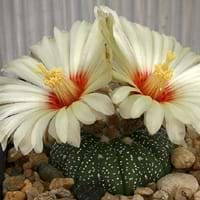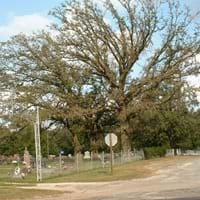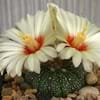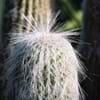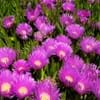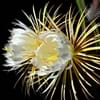Life Span
Perennial
Perennial
Type
Cactus, Flowering Plants
Tree
Origin
Mexico, Texas
North America, United States, Northeastern United States, Mid-Atlantic United States, Southeastern United States, North-Central United States, Central United States, South-Central United States, Texas, Canada
Types
Not Available
Not Available
Habitat
Desert, In desert grasslands, Rocky areas
Woodland Garden Canopy
USDA Hardiness Zone
13-15
3-8
Sunset Zone
21,22,23,24
A2, A3, 1a, 1b, 2a, 2b, 3a, 3b, 4, 5, 6, 7, 8, 9, 10, 11, 14, 15, 16, 17, 18, 19, 20, 21, 22, 23
Habit
Oval or Rounded
Oval or Rounded
Minimum Height
Not Available
Minimum Width
Not Available
Flower Color
Red, Yellow
Red, Light Green, Chartreuse
Flower Color Modifier
Not Available
Bicolor
Fruit Color
Green, Pale Pink
Brown, Chocolate
Leaf Color in Spring
Not Available
Green, Light Green, Dark Green
Leaf Color in Summer
Not Available
Dark Green
Leaf Color in Fall
Not Available
Dark Green, Gold, Brown
Leaf Color in Winter
Not Available
Not Available
Leaf Shape
Not Applicable
Lobed
Plant Season
Not Available
Spring, Summer, Fall, Winter
Sunlight
Not Available
Full Sun
Growth Rate
Not Available
Slow
Type of Soil
Not Available
Clay, Loam, Sand
The pH of Soil
Not Available
Neutral, Alkaline
Soil Drainage
Not Available
Well drained
Bloom Time
Not Available
Spring, Late Spring
Repeat Bloomer
Not Available
No
Tolerances
Not Available
Soil Compaction
Where to Plant?
Ground
Ground
How to Plant?
Seedlings, Transplanting
Seedlings, Transplanting
Plant Maintenance
Medium
Medium
Watering Requirements
Needs very little water
Average Water Needs, Keep the ground moist but not water-logged, Needs a lot of water initially, occasional watering once established, Water Deeply
In Summer
Lots of watering
Lots of watering
In Spring
Moderate
Moderate
In Winter
Average Water
Average Water
Soil pH
Not Available
Neutral, Alkaline
Soil Type
Not Available
Clay, Loam, Sand
Soil Drainage Capacity
Not Available
Well drained
Sun Exposure
Not Available
Full Sun
Pruning
Remove damaged leaves, Remove dead branches, Remove dead leaves
Remove branches, Remove damaged fruit, Remove damaged leaves, Remove dead branches, Remove dead leaves, Remove dead or diseased plant parts, Remove deadheads
Fertilizers
All-Purpose Liquid Fertilizer
All-Purpose Liquid Fertilizer, High amounts of nutrients, organic fertlizers
Pests and Diseases
Dry root rot, Root mealy bugs
Red blotch
Plant Tolerance
Drought
Drought
Flowers
Yes
Insignificant
Flower Petal Number
Not Available
Not Available
Showy Fruit
Not Available
Yes
Edible Fruit
Not Available
No
Fragrant Flower
Not Available
No
Fragrant Fruit
Not Available
No
Fragrant Leaf
Not Available
No
Fragrant Bark/Stem
Not Available
No
Showy Foliage
Not Available
Yes
Showy Bark
Not Available
Yes
Foliage Texture
Bold
Coarse
Foliage Sheen
Not Available
Glossy
Invasive
Not Available
No
Self-Sowing
Not Available
Yes
Attracts
pollinators
Birds
Allergy
Not Available
Hay fever, Itchy eyes, Runny nose, sneezing, Watery eyes, Whooping Cough
Aesthetic Uses
Beautification, Showy Purposes
Not Used For Aesthetic Purpose
Beauty Benefits
Not Available
Not Available
Environmental Uses
Air purification
Air purification, Nesting sites for birds, Shadow Tree, Shelter for wildlife, Wildlife
Medicinal Uses
Not Available
Astringent, Cramps, Tonic
Part of Plant Used
Flowers
Inner Bark, Leaves, Seeds
Other Uses
Used as Ornamental plant
Tannin, Used as a dye, Used as fuel, Used as insect repellent, Used for woodware
Used As Indoor Plant
Yes
No
Used As Outdoor Plant
Yes
Yes
Garden Design
Not Available
Feature Plant, Shade Trees
Botanical Name
Astrophytum asterias
QUERCUS macrocarpa
Common Name
Star Cactus, Sand Dollar Cactus
Burr Oak, Mossycup Oak
In Hindi
रेत डॉलर कैक्टस
Burr Oak
In German
Sand Dollar Cactus
Burr Oak
In French
Sand Dollar Cactus
Burr Oak
In Spanish
Sand Dollar Cactus
Burr Oak
In Greek
Sand Dollar Cactus
Burr Oak
In Portuguese
Cacto do dólar de areia
Burr Oak
In Polish
Sand Dollar Cactus
Burr Oak
In Latin
Sand Dollar Cactus
Burr Oak
Phylum
Magnoliophyta
Magnoliophyta
Class
Magnoliopsida
Magnoliopsida
Order
Caryophyllales
Fagales
Family
Cactaceae
Fagaceae
Genus
Astrophytum
Quercus
Clade
Angiosperms, Core eudicots, Eudicots
Angiosperms, Eudicots, Rosids
Subfamily
Cactoideae
Not Available
Number of Species
Not Available
Season and Care of Sand Dollar Cactus and Burr Oak
Season and care of Sand Dollar Cactus and Burr Oak is important to know. While considering everything about Sand Dollar Cactus and Burr Oak Care, growing season is an essential factor. Sand Dollar Cactus season is Not Available and Burr Oak season is Not Available. The type of soil for Sand Dollar Cactus is Not Available and for Burr Oak is Clay, Loam, Sand while the PH of soil for Sand Dollar Cactus is Not Available and for Burr Oak is Neutral, Alkaline.
Sand Dollar Cactus and Burr Oak Physical Information
Sand Dollar Cactus and Burr Oak physical information is very important for comparison. Sand Dollar Cactus height is Not Available and width Not Available whereas Burr Oak height is 2,130.00 cm and width 2,130.00 cm. The color specification of Sand Dollar Cactus and Burr Oak are as follows:
Sand Dollar Cactus flower color: Red and Yellow
Sand Dollar Cactus leaf color: Not Available
Burr Oak flower color: Red, Light Green and Chartreuse
- Burr Oak leaf color: Green, Light Green and Dark Green
Care of Sand Dollar Cactus and Burr Oak
Care of Sand Dollar Cactus and Burr Oak include pruning, fertilizers, watering etc. Sand Dollar Cactus pruning is done Remove damaged leaves, Remove dead branches and Remove dead leaves and Burr Oak pruning is done Remove branches, Remove damaged fruit, Remove damaged leaves, Remove dead branches, Remove dead leaves, Remove dead or diseased plant parts and Remove deadheads. In summer Sand Dollar Cactus needs Lots of watering and in winter, it needs Average Water. Whereas, in summer Burr Oak needs Lots of watering and in winter, it needs Average Water.
